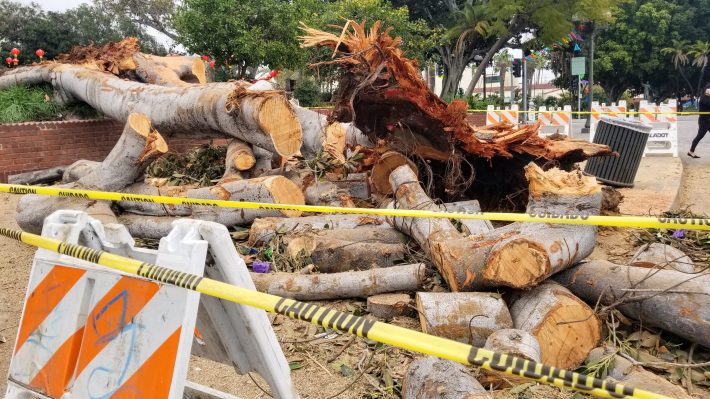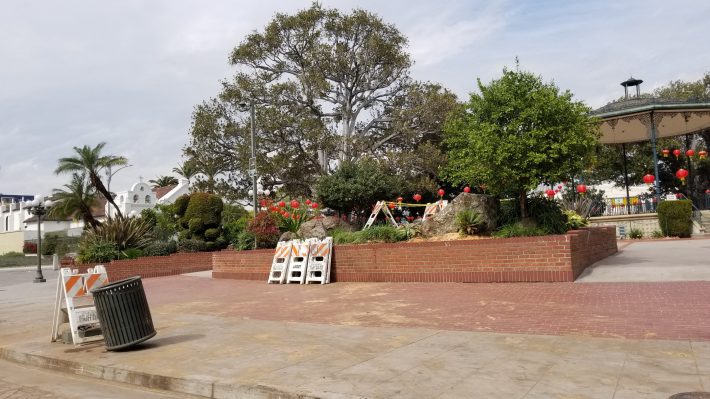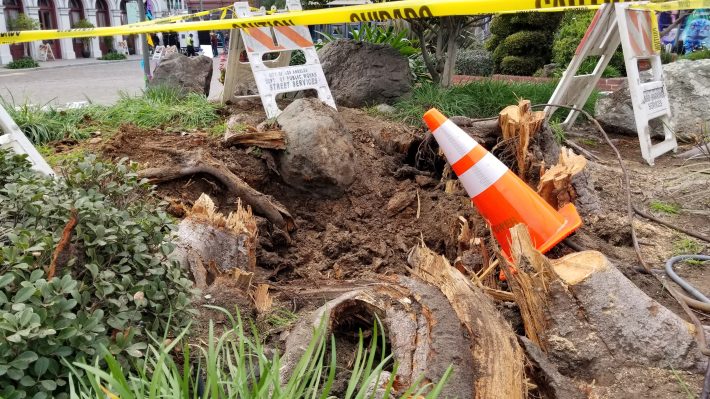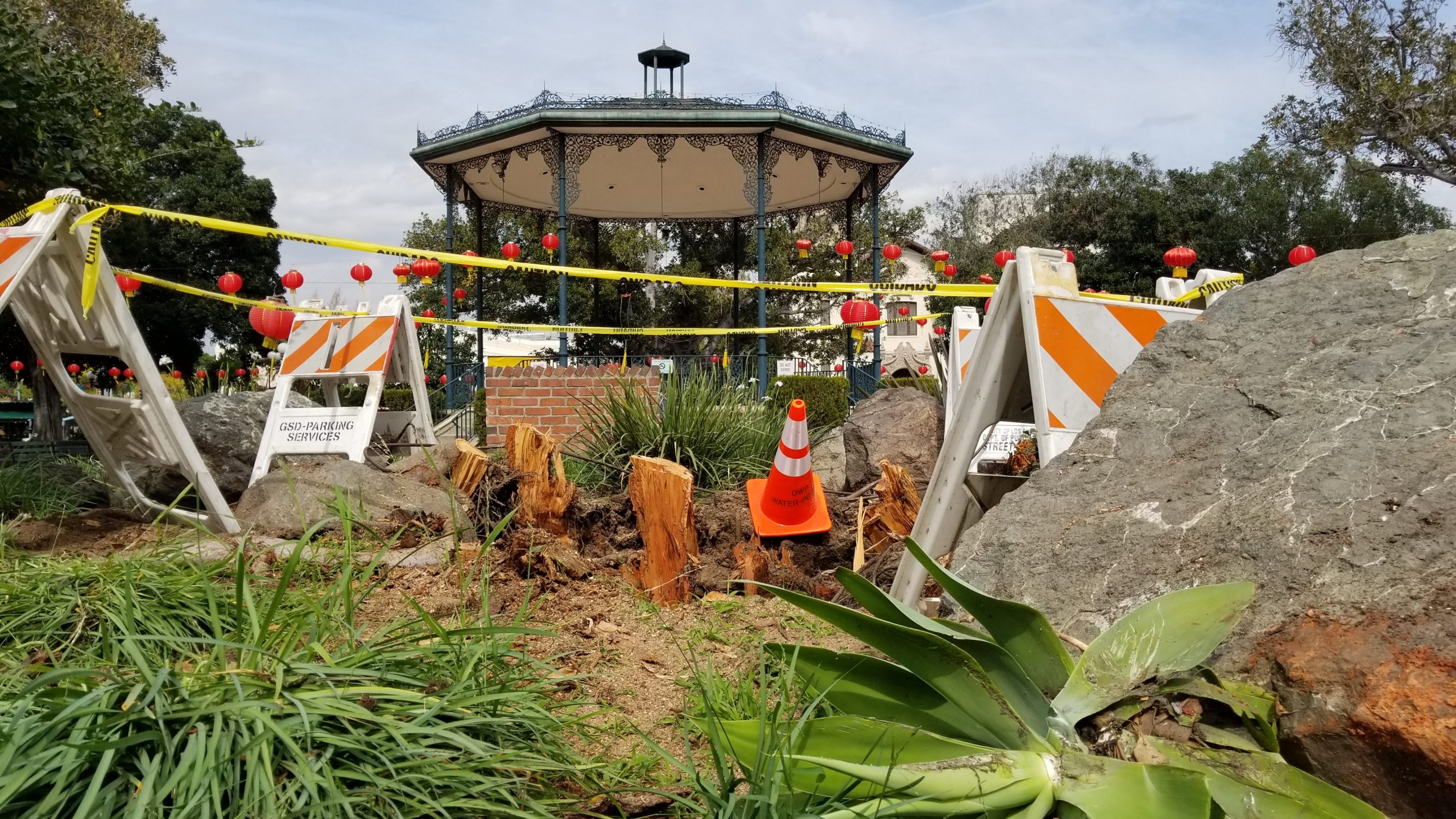[dropcap size=big]A[/dropcap] tree that was older than the freeways, the legendary Red Cars, and frankly older than most L.A. buildings fell this month in the birthplace of Los Angeles.
At approximately 2:25 pm on March 2, a massive Moreton Bay fig tree that stood for 144 years fell near the outer rim of Los Angeles Plaza near Olvera Street in downtown. It happened during a Chinese lantern festival with firecrackers masking the sound of that giant piece of Los Angeles history toppling down.
It was one of four trees — characterized by their thick canopies and ruddy top roots that snake into the ground around it — that ringed the historic central “placita” of L.A. It is now an open wound of dirt and sap. No injuries were reported. The city is currently figuring out what to do next.

While technically not an indigenous tree of California, the Moreton Bay fig, or Ficus macrophylla, has set roots in the plaza since the late 19th century. And in a way the tree helped shape Southern California’s botanical identity.
Seeds and saplings of the species were shipped from the subtropics of East Australia and first arrived on the shores of California by 1870, as a part of the first wave of transplants from Australia. Another massive tree that became synonymous with California, the Eucalyptus, would arrive at around the same time.
Known now for their branches that can span past 100 feet, early agriculturists weren’t as aware of how easily these trees turned into giants. In the span of a couple decades, the Moreton Bay fig spread from San Diego to Santa Barbara. Most of the best examples of the species that exists today are more than 100 years old.

[dropcap size=big]F[/dropcap]our of the goliath trees were planted by Elijah Hook Workman in the heart of Los Angeles as a part of a local revival effort in 1875. Now, three of those trees remain.
The Los Angeles Plaza was once a dry and barren landscape with no shade at all during the Spanish and Mexican rule of California and early decades of the American occupation. The year 1859 marked the first attempt to improve the setting, when the city added shrubbery, walkways, and a fence. But the improvements didn't last and the Plaza fell into a state of dilapidation again.
The cycle is reminiscent of many that would follow, such as the efforts by a booster named Christine Sterling to develop to a Mexico-themed shopping walkway that became Olvera Street in 1930.

A few days after it fell, the giant uprooted tree stump was still lined with caution tape, but by late last week, all that was left were some wood chips, a few pieces of bark and a giant hole. The usual run of tourists wandered about like nothing happened. It felt like something was missing.
The El Pueblo Historical Monument Facebook page said that they plan to undertake a community process to decide how to replace the tree and that different ideas have already been proposed. The city confirmed last week that the remaining fig trees do not pose a public safety risk, according to an LAT report.
There might still be a giant hole near the south side of the Plaza, but the rest of El Pueblo is filled with life. Newer plants and trees are taking root, the vibrant group of performers, vendors, and spectators that gather on weekends still alive.
If we learn from this tragedy and find healthier ways to take care of our relics, then the seeds we plant today will grow bigger and last even longer than 144 years.
RELATED: Joshua Tree Is OK for Now ~ How Volunteers Are Pitching in During the Shutdown
RELATED: We Have Ten Years to Save the World: Climate Change Is Definitely F*cking Happening ~ An Update







